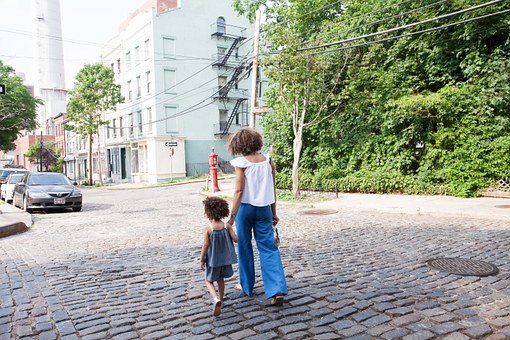A robust national child care policy is the only long-term solution that will meet the needs of children and families.

Earlier this month, President Biden signed a $1.9 trillion stimulus bill that includes $50 billion in child care relief. (And there are rumblings that the White House may be pushing for additional support soon.) This is a huge win for families, and particularly for working parents and the early childhood care and education system that makes it possible for them to work. It’s the biggest investment I’ve seen in my 30 years as a researcher studying this system—and I’m excited to think about where we can go from here.
The U.S. child care system has long been inadequate when it comes to meeting the needs of working parents. As parents know, it is expensive: middle-class households spend on average 10 percent of their budget on child care; low-income households spend a third of their budget. The high cost forces parents to cobble together a myriad of care arrangements to make it work. In addition, early childhood care and education providers receive exceptionally low pay for the essential work they do every day: caring for our children.
The pandemic exacerbated these longstanding problems. When COVID-19 hit, many child care centers and family child care homes closed, and many will never reopen. These programs got by on razor-thin margins before COVID-19, and after being closed for months during lockdowns, and reopening with limited capacity and extra expenses due to new health regulations, many simply cannot afford to keep their doors open. This means even fewer quality child care spots, rising costs for families, and harder choices—as I found when a colleague and I conducted focus groups and interviews with 24 parents and guardians in Boston last summer.
In addition, many early child care and education providers lost their jobs in the beginning months of the pandemic, and even now, many must choose between staying home with their own school-aged children who are trying to learn remotely or going to work.
We know that the problems around child care have reached the breaking point. We should take this opportunity to not just help early childhood care and education programs get through this current crisis—though that is critical—but to rethink our whole system and build one that works better for everyone.
My research has shown that a robust national child care policy is the only long-term solution that will meet the needs of children and families. A national policy would have to address the issue of affordability, with free universal pre-kindergarten for all preschool-aged children, subsidies on a sliding scale for families with infants, toddlers and school-age children, and guaranteed paid parental leave.
It would also need to ensure access to quality care, with national standards for group size, ratios of children to staff, health and safety, and work force qualifications. It would align higher education with the core competencies for child care professionals, and provide ongoing professional development, including coaching. Just any child care is not enough: High-quality child care has been shown to make a huge difference in children’s lives for years to come by preparing children to do well both academically and socially.
Last but certainly not least, a national policy would have to address challenges faced by the early childhood care and education work force, with the goal of raising wages, maintaining diversity, and reducing turnover. This work force—the vast majority of whom are women, often women of color—needs wages worthy of the essential role they play, with pay comparable to that of public school teachers. They also need a career lattice with multiple points of entry into careers in early childhood care and education, and various ways to advance in the field.
These are changes that would benefit families and educators, employers and employees, women and men. As it so happens, a world that is good for women is good for everyone. Child care is not a women’s issue; it is a public good that is inseparable from the economy as a whole. We cannot achieve gender equality or economic recovery until our child care system is rebuilt from the ground up. Let’s take this opportunity to do it sooner rather than later.
Up next:





